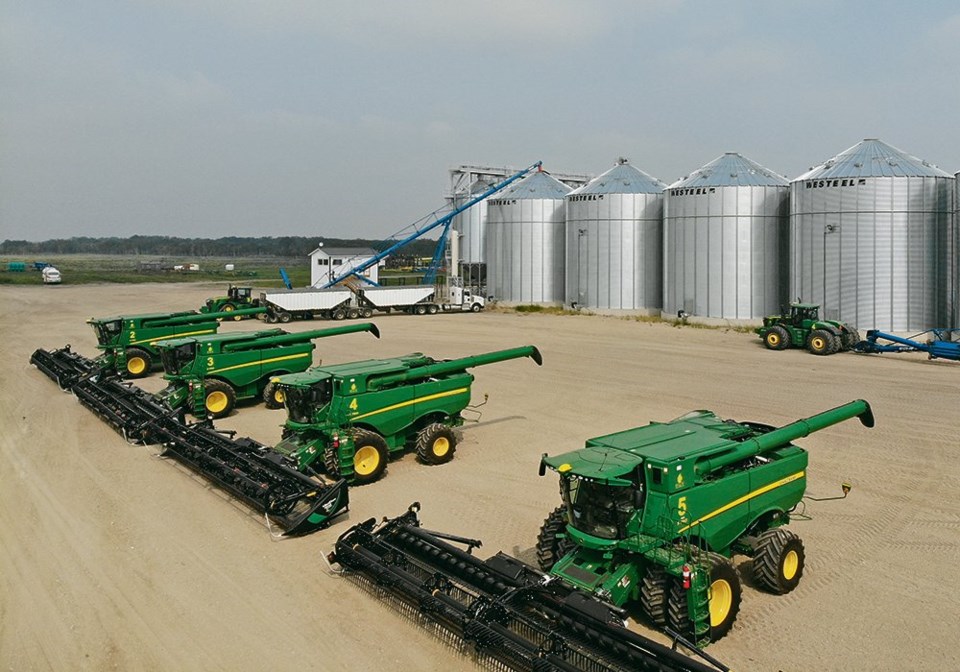WESTERN PRODUCER — In early March, Agriculture Canada released a discussion document explaining its plan to cut greenhouse gas emissions from fertilizer by 30 percent over the next eight years.
The main purpose of the paper is to stimulate conversation between farmers, the agricultural industry and government.
The paper will likely generate reaction, but maybe not what Ag Canada expects.
Many producers are frustrated by the federal government’s focus on greenhouse gas emissions from farms and the failure to credit farmers for sustainable practices like zero till.
“My first reaction is it’s more a wording issue than a policy issue,” said Kristjan Hebert, who runs Hebert Grain Ventures near Moosomin, Sask.
“Things like nitrogen inhibitors and biologicals and new types of fertilizer and how we use it are all great discussions to have… (but) a mass reduction of 30 percent I think is completely illogical.”
Hebert said discussions about using fewer inputs while still improving yields are fair. Farmers have done just that over the last 30 years.
“In the last decade or the last 20 or 30 years, we grow more grain per unit of fertilizer (on our farm) than we have in our entire life.”
In 2022, Hebert Grain Ventures plans to seed canola, malt barley, wheat, fall rye, yellow peas and oats on about 30,000 acres.
To achieve the goal of 30 percent fewer emissions, Ag Canada policy makers need to get farmers like Hebert on board with the plan.
That could be challenging. In Ag Canada’s first round of consultations about fertilizer emissions last spring, many producers delivered a message similar to Hebert’s.
“Several agriculture commodity and producer associations noted concerns that the fertilizer emissions reduction target could result in a decrease in crop yields,” Ag Canada said in in its March discussion document.
“They questioned setting a target based on absolute emissions vs. emission intensity, which appears to be in direct conflict with the Government of Canada’s export growth target of $75 billion worth of agriculture and agri-food commodities by 2025.”
Robert Andjelic, who runs Andjelic Land and owns more than 200,000 acres of farmland in Saskatchewan, had a similar comment.
“I’m all in favour about realistic goals and practical solutions, as long as they don’t bankrupt the agricultural community.”
For Hebert, this issue is bigger than fertilizer emissions from Canadian farms.
The flaw in these public discussions is that farmers are consistently portrayed as climate change villains.
In 2021, Corteva Agriscience recognized Hebert as a climate positive leader, one of nine farmers around the globe and the only Canadian to receive the award.
Others haven’t won such awards, but thousands of Canadian producers have changed or are changing their practices to become more sustainable. However, there’s little recognition of those efforts.
“My true belief is that agriculture is the solution, not the culprit,” Hebert said. “They talk about emissions from our fertilizer and our tractors, yet they want to put a baseline (date) in around zero till.”
Hebert is referring to a federal government decision to create a cutoff of 2017, where farmers who practised reduced tillage before that year will not receive credit for storing carbon in the soil.
“Zero-till’s improvement to organic matter and carbon sink has been phenomenal over the last 30 or 40 years…. But because we’ve done it, they don’t want to add it into the calculations,” he said.
Having a cut-off date appears to penalize farmers on the Prairies, where reduced tillage is practised on 75 percent of farmland.
Meanwhile, other sectors of global agriculture are only now singing the praises of reduced tillage. For example, the soybean industry in the United States is now embracing reduced tillage 30 years after it exploded in Western Canada.
“We’re excited about the progress that’s been made in no-till farming and the ability to grow crops without disturbing the important residue on top of the soil surface,” said Jim Sutter, chief executive officer of the U.S. Soybean Export Council, during a session of the U.S. Department of Agriculture Ag Outlook, held in February.
“It limits erosion, enhances moisture retention. It’s really amazing…. This is a significant improvement… that has enabled sustainability.”
Hebert said it’s fantastic if other parts of the world take up zero-till.
“But the regions that are already doing it should not be penalized…. Why is it almost a penalty that you’ve been ahead of the curve on sustainability?”
Hebert also questioned the federal government’s focus on certain farm practices to cut emissions from agriculture.
Last month, Ag Canada announced $182.7 million in funding to help farmers fight climate change by promoting the use of cover crops, rotational grazing and better management of nitrogen.
But there is little data to show that cover crops can reduce emissions from western Canadian farms.
“Currently, the policy is being made (to) incentivize practices. Not outcomes,” Hebert said. “There’s a big difference between a cover crop in Saskatchewan, where I have three feet of snow and eight feet of frost for six months of the year, versus a cover crop in Brazil, where if they don’t do a cover crop… their soil blows away.”
Hebert agreed that the push to make farming more sustainable is not going away. Environmental, social and governance (ESG) investing, which directs global capital to sustainable industries, is on the rise. As well, consumer interest in carbon emissions is probably here to stay.
“In the end, the consumer writes the cheque for our product.”
Still, he would like to see more public investment in soil studies and new technology, such as soil sensors, to fully understand how much carbon is being sequestered in agricultural soils.
“I would say that agriculture feels we’re getting the finger pointed at us as the culprit because we’re such a small percentage of the votes and it’s easy to do,” Hebert said.
“That’s definitely the feeling in agriculture.”




